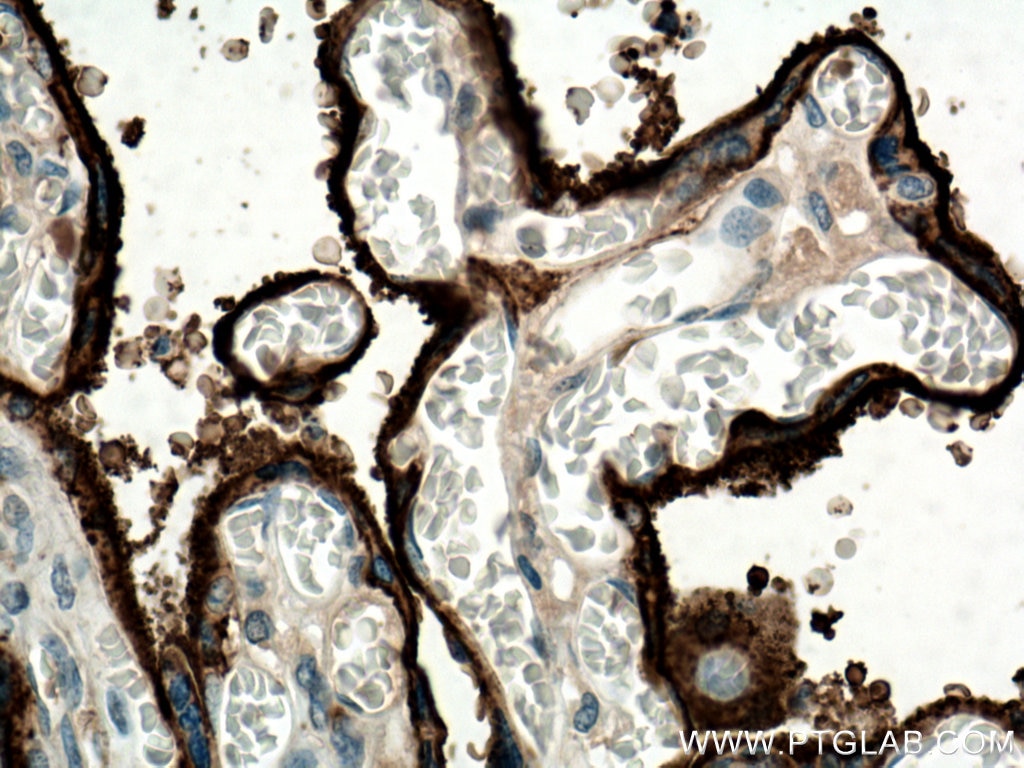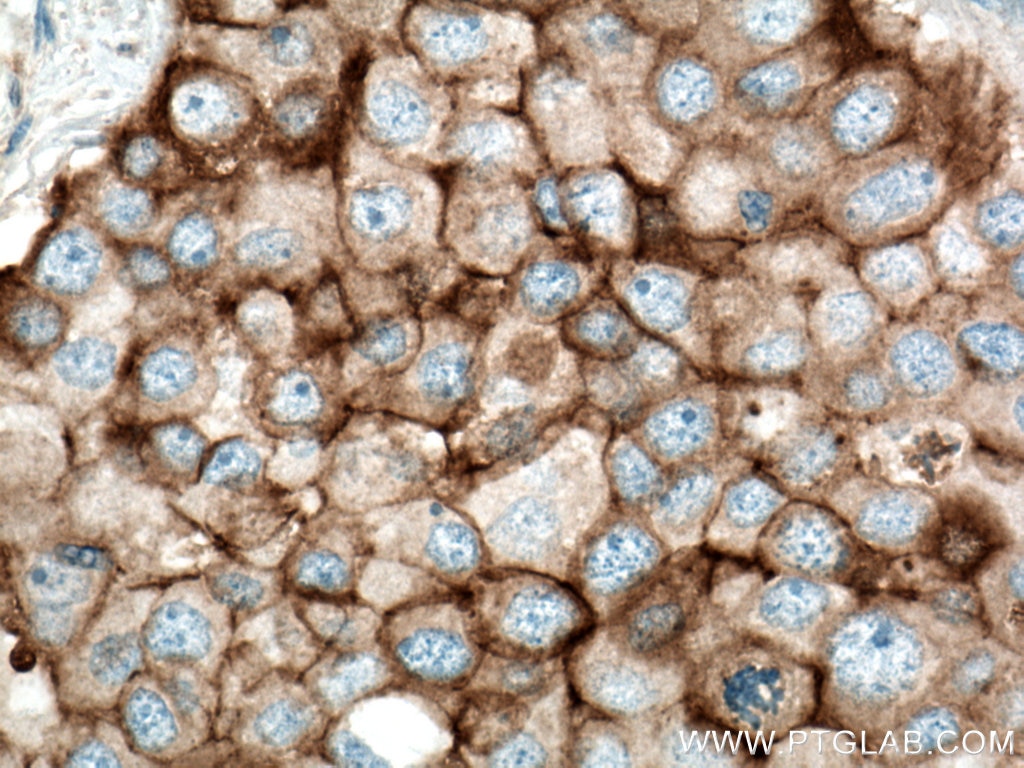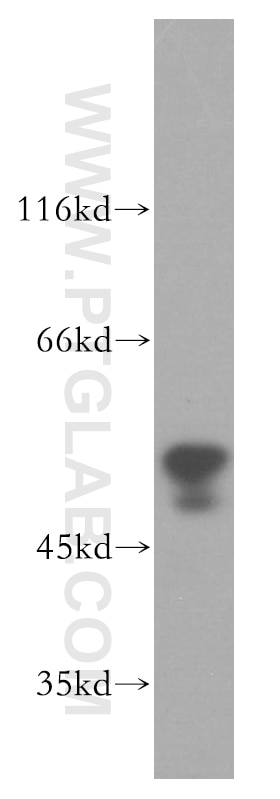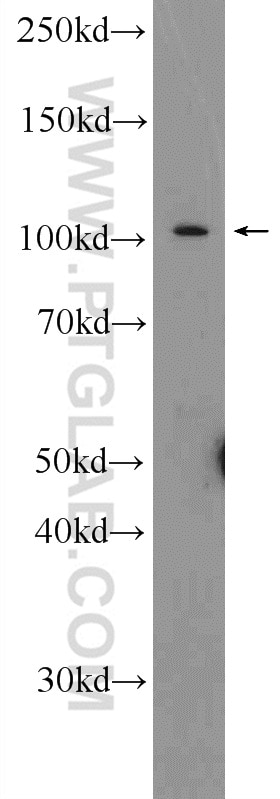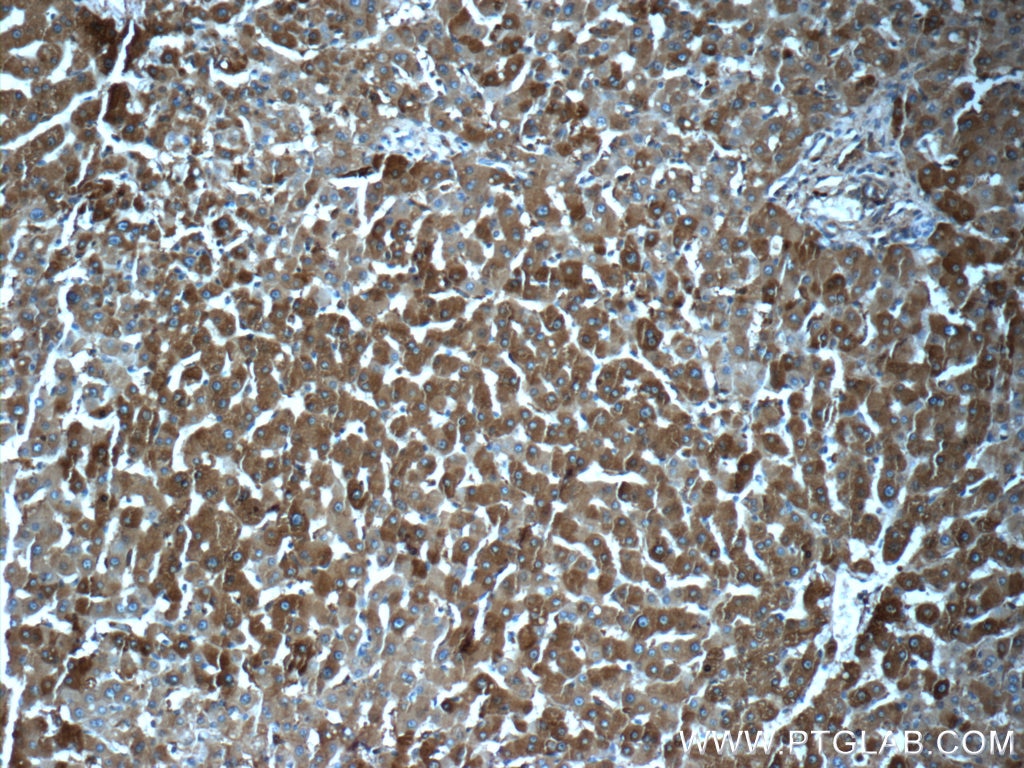- Featured Product
- KD/KO Validated
CD71 Monoklonaler Antikörper
CD71 Monoklonal Antikörper für FC, IF, IHC, IP, WB, ELISA
Wirt / Isotyp
Maus / IgG2a
Getestete Reaktivität
human
Anwendung
WB, IP, IHC, IF, FC, Blocking assay, ELISA
Konjugation
Unkonjugiert
CloneNo.
3C11F11
Kat-Nr. : 66180-1-Ig
Synonyme
Galerie der Validierungsdaten
Geprüfte Anwendungen
| Erfolgreiche Detektion in WB | U-251-Zellen, A431-Zellen, A549-Zellen, HeLa-Zellen, HepG2-Zellen, K-562-Zellen, Raji-Zellen, TF-1-Zellen, U2OS-Zellen |
| Erfolgreiche IP | HeLa-Zellen |
| Erfolgreiche Detektion in IHC | humanes Plazenta-Gewebe, humanes Mammakarzinomgewebe Hinweis: Antigendemaskierung mit TE-Puffer pH 9,0 empfohlen. (*) Wahlweise kann die Antigendemaskierung auch mit Citratpuffer pH 6,0 erfolgen. |
| Erfolgreiche Detektion in IF | humanes Mammakarzinomgewebe, MCF-7-Zellen |
| Erfolgreiche Detektion in FC | Raji-Zellen |
Empfohlene Verdünnung
| Anwendung | Verdünnung |
|---|---|
| Western Blot (WB) | WB : 1:5000-1:50000 |
| Immunpräzipitation (IP) | IP : 0.5-4.0 ug for 1.0-3.0 mg of total protein lysate |
| Immunhistochemie (IHC) | IHC : 1:2000-1:8000 |
| Immunfluoreszenz (IF) | IF : 1:200-1:800 |
| Durchflusszytometrie (FC) | FC : 0.20 ug per 10^6 cells in a 100 µl suspension |
| It is recommended that this reagent should be titrated in each testing system to obtain optimal results. | |
| Sample-dependent, check data in validation data gallery | |
Veröffentlichte Anwendungen
| KD/KO | See 1 publications below |
| WB | See 13 publications below |
| IF | See 3 publications below |
Produktinformation
66180-1-Ig bindet in WB, IP, IHC, IF, FC, Blocking assay, ELISA CD71 und zeigt Reaktivität mit human
| Getestete Reaktivität | human |
| In Publikationen genannte Reaktivität | human |
| Wirt / Isotyp | Maus / IgG2a |
| Klonalität | Monoklonal |
| Typ | Antikörper |
| Immunogen | CD71 fusion protein Ag21612 |
| Vollständiger Name | transferrin receptor (p90, CD71) |
| Berechnetes Molekulargewicht | 85 kDa |
| Beobachtetes Molekulargewicht | 90 kDa |
| GenBank-Zugangsnummer | BC001188 |
| Gene symbol | TFRC |
| Gene ID (NCBI) | 7037 |
| Konjugation | Unkonjugiert |
| Form | Liquid |
| Reinigungsmethode | Protein-A-Reinigung |
| Lagerungspuffer | PBS mit 0.02% Natriumazid und 50% Glycerin pH 7.3. |
| Lagerungsbedingungen | Bei -20°C lagern. Nach dem Versand ein Jahr lang stabil Aliquotieren ist bei -20oC Lagerung nicht notwendig. 20ul Größen enthalten 0,1% BSA. |
Hintergrundinformationen
CD71, also known as transferrin receptor protein 1 (TfR1), is a transmembrane glycoprotein composed of two disulfide-linked monomers, each of 90 kDa molecular weight. Each monomer binds one holo-transferrin molecule creating an iron-Tf-TfR complex which enters the cell by endocytosis. CD71 is present on actively proliferating cells and is essential for iron transport into proliferating cells.
Protokolle
| Produktspezifische Protokolle | |
|---|---|
| WB protocol for CD71 antibody 66180-1-Ig | Protokoll herunterladen |
| IHC protocol for CD71 antibody 66180-1-Ig | Protokoll herunterladen |
| IF protocol for CD71 antibody 66180-1-Ig | Protokoll herunterladen |
| IP protocol for CD71 antibody 66180-1-Ig | Protokoll herunterladen |
| Standard-Protokolle | |
|---|---|
| Klicken Sie hier, um unsere Standardprotokolle anzuzeigen |
Publikationen
| Species | Application | Title |
|---|---|---|
Chem Eng J Functionalized biological metal–organic framework with nanosized coronal structure and hierarchical wrapping pattern for enhanced targeting therapy | ||
Cell Death Dis Super-enhancer-driven MLX mediates redox balance maintenance via SLC7A11 in osteosarcoma | ||
Free Radic Biol Med Targeting the Na+/K+ ATPase DR-region with DR-Ab improves doxorubicin-induced cardiotoxicity | ||
Bioeng Transl Med Multistage targeting and dual inhibiting strategies based on bioengineered tumor matrix microenvironment-mediated protein nanocages for enhancing cancer biotherapy. | ||
PLoS Genet SNX-3 mediates retromer-independent tubular endosomal recycling by opposing EEA-1-facilitated trafficking. | ||
J Biol Chem Rab11-mediated post-Golgi transport of the sialyltransferase ST3GAL4 suggests a new mechanism for regulating glycosylation. |






